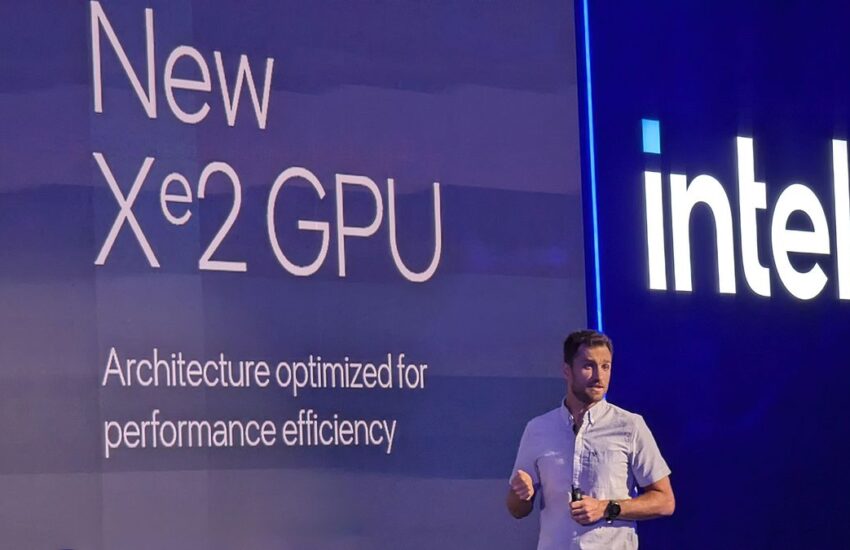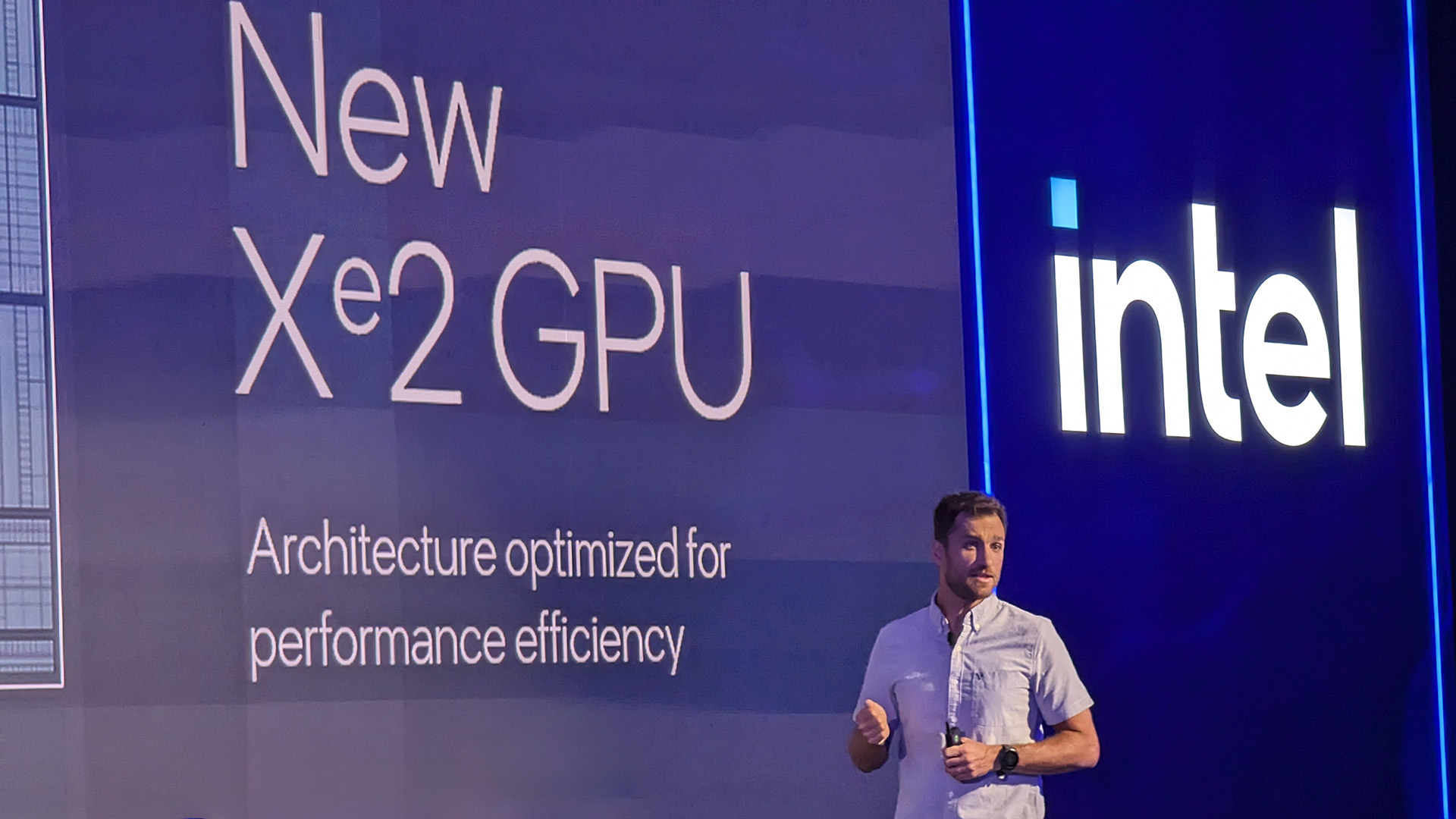
What you need to know
- Intel is overhauling its graphics microarchitecture for upcoming mobile devices powered by its Lunar Lake SoC and future discrete Intel Arc GPUs.
- The new Xe2 architecture primarily focuses on power efficiency and AI capabilities but also boosts gaming-specific performance.
- Moving real-time rendering operations from software emulation to hardware contributes to a 1.5x performance boost over Intel’s previous generation.
Intel is ready to launch its next generation of mobile architecture with Lunar Lake-powered OEM hardware in Q3 of 2024 and change the way we think about AI PCs with a host of improvements to performance and efficiency. While the company has focused, understandably, on its fourth-generation Neural Processing Unit (NPU) to boost its overall Tera Operations per Second (TOPS) count for AI computing, it was proud to share a gigantic leap forward for the graphics tile nestled in its new Lunar Lake System-on-Chip (SoC) design.
Presented on stage and through a series of intimate Q&A sessions during its latest (and largest) Intel Tech Tour in Taiwan, I had exclusive access to the intricate details of how and why Lunar Lake will be a big deal for mobile graphics. The new Xe2 microarchitecture improves media, display, and Image Processing Unit (IPU) operations on the Lunar Lake compute tile, but a promise of “up to 1.5 performance at the same power (of Meteor Lake U)” hints at more benefits awaiting gamers and content creators.
Intel funded travel and expenses to Taipei, Taiwan, and provided confidential information under an embargo agreement. The company did not see the contents of this article before publishing.
What are Intel Xe2 “Battlemage” GPUs?
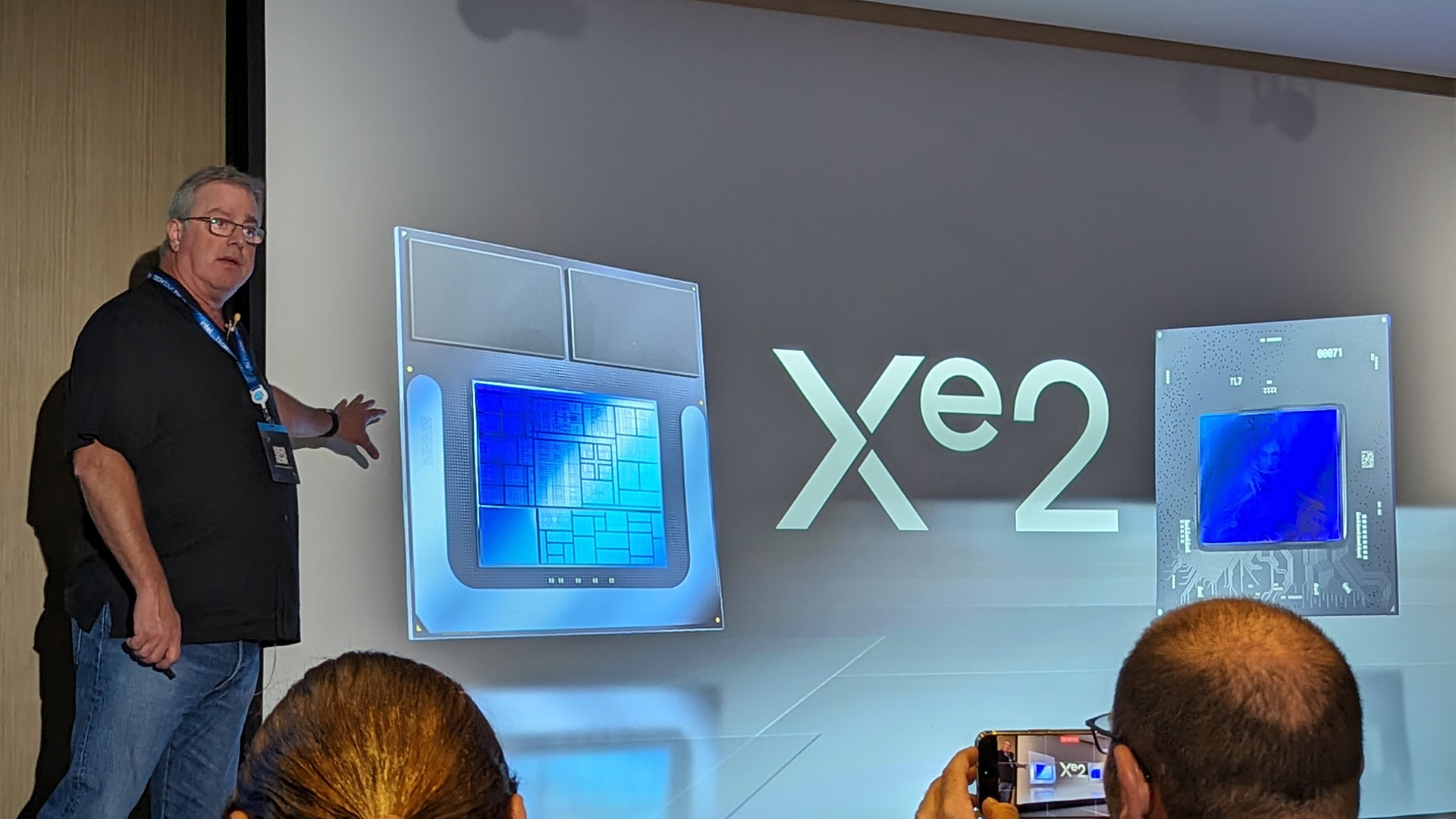
Anyone following Intel’s efforts in the graphics hardware scene will have likely heard of Battlemage, the codename assigned to secretive technology behind next-generation Intel Arc discrete graphics. During a focused talk in Taipei, Intel Fellow Thomas “TAP” Petersen described how the second-generation Xe2 unified graphics architecture will feature in next-gen Intel Arc desktop graphics cards alongside its new GPU tile in the Lunar Lake mobile SoC. It evolves from the Xe architecture used in Meteor Lake that powered Intel’s first discrete “Alchemist” GPU family, which itself improved over the following two years with performance upgrades to gaming and other real-time image rendering via driver updates.
Think about Xe2 as the next generation of GPU architecture designed to be more compatible with games and (at a) higher utilization.
Thomas “TAP” Petersen, Intel Fellow
TAP is one of the most charismatic speakers from Intel you could ever hope to interact with, as he enthusiastically breaks down the microarchitecture hardware stylings of Xe2 graphics and what it all means for developers. Based on his immense knowledge and experience in the graphics industry, I almost suspect he could draw accurate diagrams of its complex blueprints blindfolded. Still, while he offered the depth of how it all works, Petersen also explained in plain, understandable summaries why any of this matters to your everyday laptop user and portable gaming enthusiast.
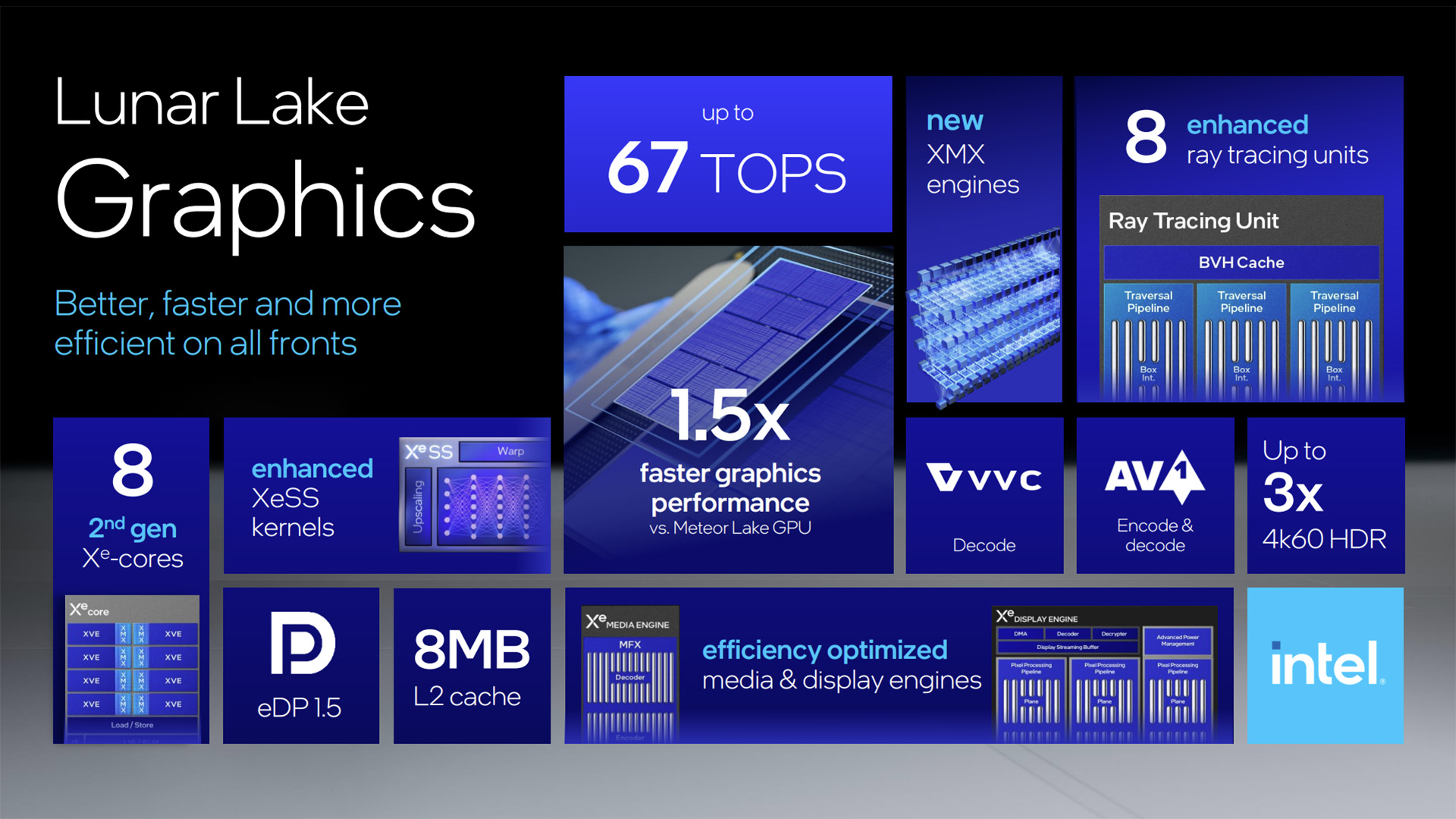
Xe2 is Intel’s new generation of graphics architecture explicitly designed to be more compatible with games and improve performance in other real-time rendering engines. It’s utilizing new Xe Matrix Extension (XMX) engines running at 67 peak TOPS in hardware, taking over AI-centric upscaling methods used by XeSS previously software-emulated on laptops alongside a larger Xe Ray Tracing Unit (RTU) to handle realistic lighting effects. Intel had a lot to learn about CPU limitations and DirectX during its time with its codename Alchemist GPUs. Still, efforts to improve performance for games post-launch have directly influenced Xe2 and Battlemage.
When we launch you’re gonna see dramatically better game compatibility.
Thomas “TAP” Petersen, Intel Fellow
Of course, Lunar Lake will include more exciting graphical advancements besides improving gaming performance with the Xe2 evolution. Updates to the display tile on the SoC support new standards like eDisplayPort 1.5 (eDP), which uses an adaptive sync system similar to Variable Refresh Rates (VRR.) Essentially, it allows an Intel Xe2-based GPU to control the refresh rate of a connected panel in a device like a laptop or a gaming handheld like the MSI Claw, solving hitching issues similar to what you might encounter when watching movies (usually 24 FPS) shown on screens with a mismatched refresh rate (like the typical 60Hz.)
The Lunar Lake media tile sees support for bleeding-edge video codecs like VVC, also known as H.266, which features clever dynamic resolution changes for streamed video without increasing bandwidth when the quality moves up or down. It’s a brand new format for video and likely won’t see broad adoption for a while, but as Tom Petersen puts it: “If we don’t support the interface, it kinda dies — if we build it, they will come.” I saw a live comparison of 4K video running at 24 FPS on a pair of comparable Meteor Lake and Lunar Lake devices, the latter utilizing hardware decoding with a power draw of around only 2.5W compared to the former’s 24W. Impressive.
What Intel Xe2 means for gamers
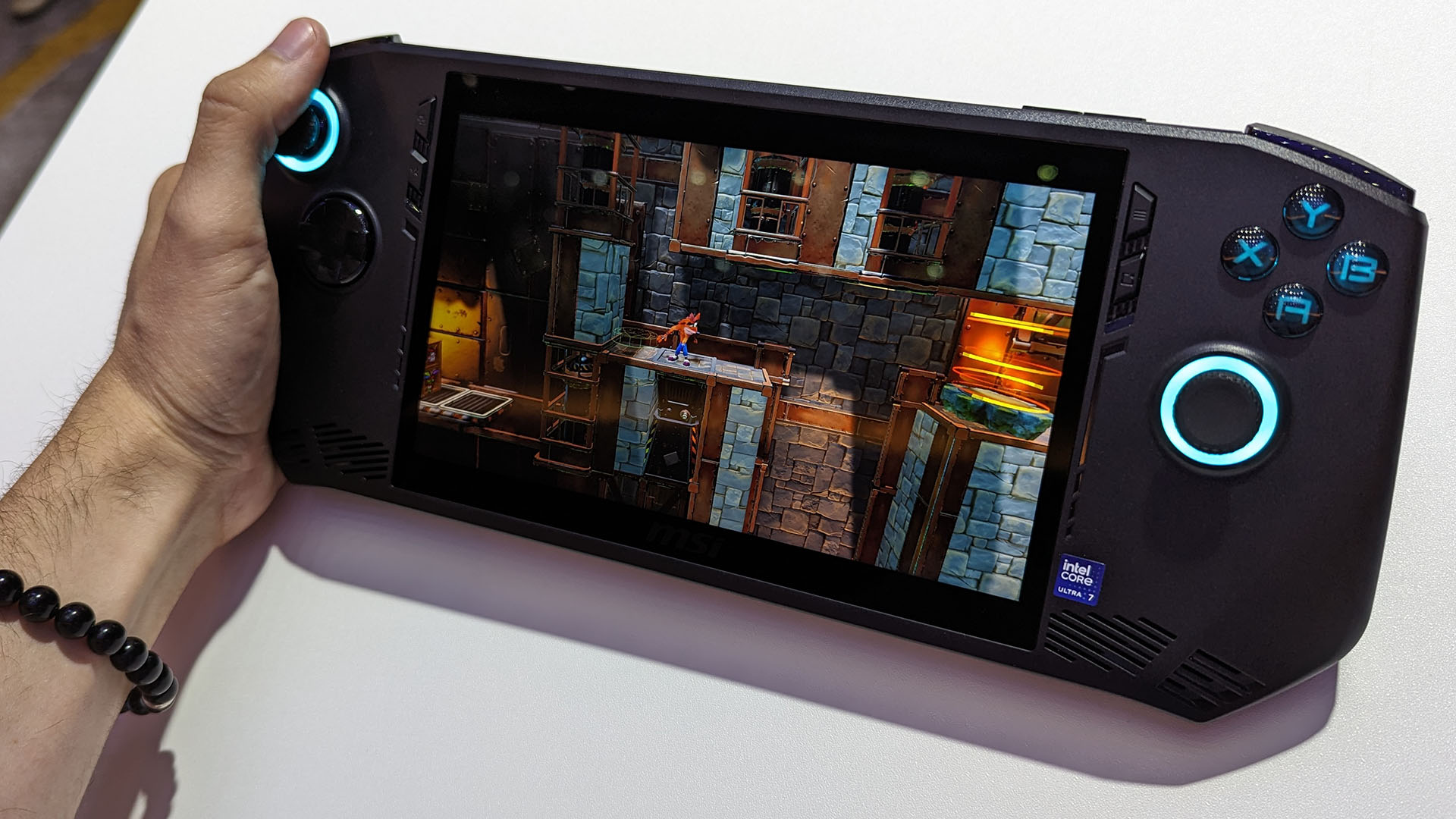
Without deciphering the low-level intricacies of what makes Xe2 tick within its complex die, I can briefly describe the benefits that Intel claims will come with Lunar Lake and beyond into Battlemage discrete GPUs. Tom Petersen explains how much Intel learned from its previous efforts with Alchemist GPUs and its first-generation Xe architecture, describing it as “a very big step forward for Intel architecture (and) we discovered lots of different bottlenecks that we never saw before, so this architecture (Xe2) is correcting most of that.”
More and more often, you’ll see games running right out of the box.
Thomas “TAP” Petersen, Intel Fellow
With in-house testing, Intel’s engineering team checks for performance improvements in ultra-specific instructions by “microbenchmarking” individual parts of the Xe2 GPU. One instruction moving to hardware for faster processing in Lunar Lake is Draw XI (ExecuteIndirect), commonly used by game engines like Unreal 5 and enjoys a massive 12.5x performance increase over Meteor Lake. These gaming-centric boosts join the previously-mentioned addition of XMX AI engines, now running in hardware instead of software, and led to a real-time demonstration of racing simulator F1 2024 running at over 60 FPS with ray-traced shadows enabled on a Lunar Lake reference machine before its planned release date.
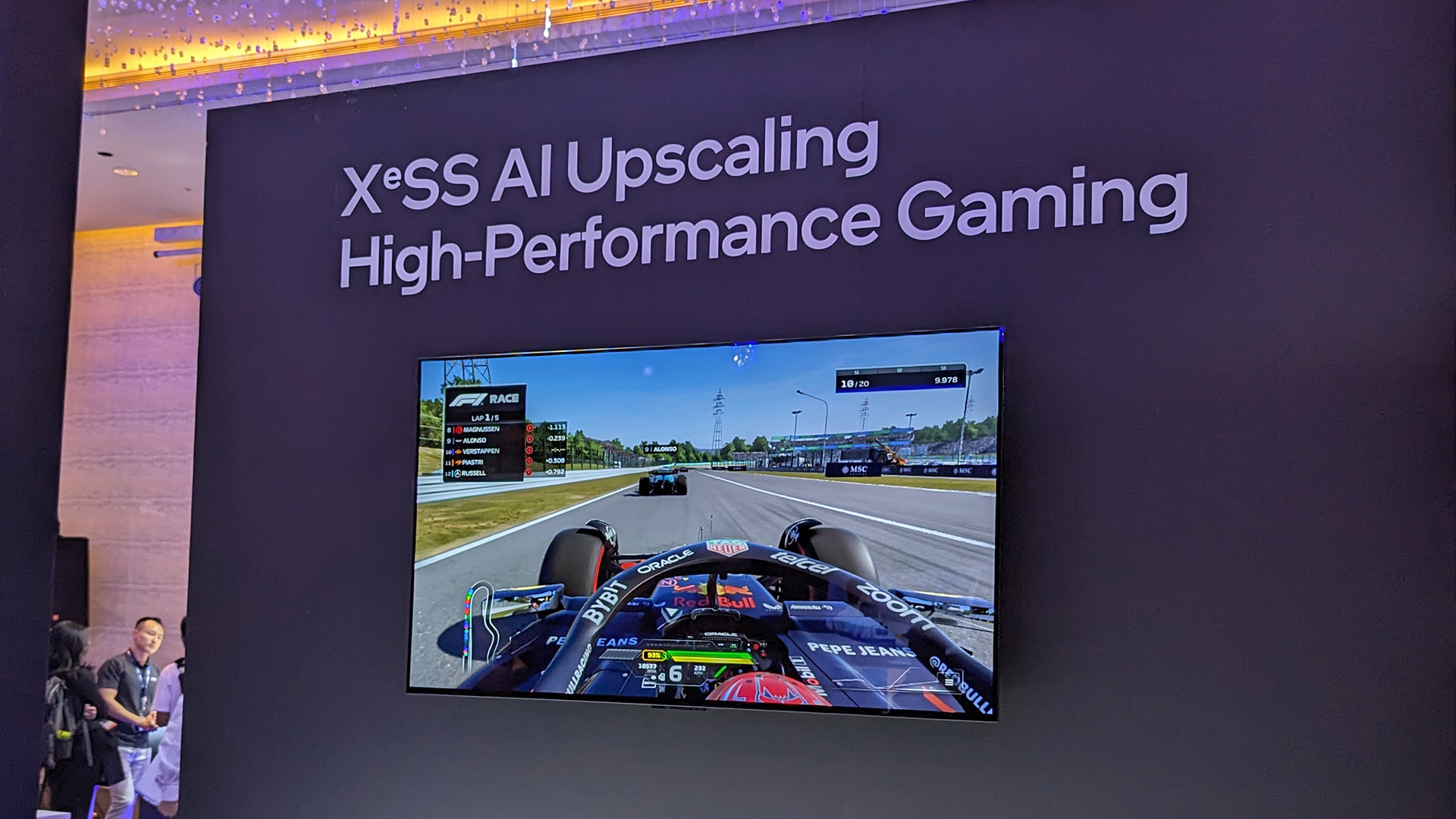
Of course, there were some specifics that Intel wasn’t ready to share during my time in Taipei, like an estimate of the average TDP for Lunar Lake or even a figure for the maximum TDP. Plus, while Xe2 offers up to 1.5x performance boosts over previous-gen Meteor Lake U-Series, there weren’t any clarifications for H-Series comparisons besides performance being “faster” on Lunar Lake, which feels like a given.
Intel also has some ground to cover regarding credibility in the handheld gaming space due to the disappointing launch of the Core Ultra-powered MSI Claw. However, it’s not the end for Intel and PC handhelds, thanks to the realistic prospect of more OEMs signing up for a chance to use Lunar Lake chips and the hardware-boosted rendering benefits within.
Plus, MSI’s new Claw 8 AI+ will be the first gaming handheld to run on an Intel Lunar Lake processor and could help overcome any tentative feelings held by potential gamers looking for their next PC handheld. If not, a potential Lunar Lake refresh of the original 7-inch Claw seems to be on the cards, as suggested by MSI representatives during Computex 2024. Either way, I still agree that Intel Arc GPU performance is better than most might assume and will tentatively follow the progress of Xe2 and Battlemage.

